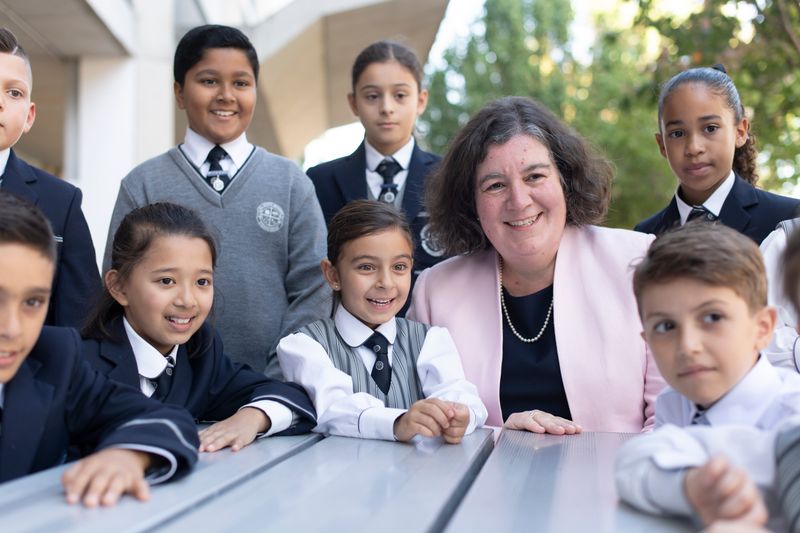In today’s world, the middle class finds itself in an increasingly precarious position. The dream of financial stability and comfort appears to be slipping away as various essential aspects of life become prohibitively expensive. From owning a home to providing quality education for children, the rise in costs has outpaced income growth for many. This shift has forced families to reassess priorities and make difficult choices, often sacrificing long-held aspirations. The following list explores twelve key areas where the middle class feels the pinch, shedding light on the growing financial challenges that define modern living.
Buying a Home

Homeownership, once a cornerstone of the American Dream, is slipping from the grasp of many middle-class families. The soaring prices of real estate, particularly in urban and suburban areas, are leaving prospective buyers daunted. Interest rates are climbing, turning what was once a feasible goal into a far-off dream.
Even when families find a suitable home, they face fierce competition. Limited inventory means bidding wars are common, often driving prices even higher.
For many, renting becomes the only viable option, yet even rental prices are escalating, stretching budgets thin. The landscape of homeownership is changing, and not in favor of the middle class.
Raising Children

Raising children has always been a rewarding yet daunting task, and financially, it’s becoming increasingly challenging. The cost of daycare alone can rival a mortgage payment, leaving families scrambling to make ends meet.
School supplies, extracurricular activities, and college tuition add layers of financial strain. Every aspect of a child’s upbringing seems to come with a hefty price tag, often leading parents to reconsider family planning.
Some families are forced to cut back on the number of children they have, while others seek additional jobs to cover costs. The joy of parenting can be overshadowed by the financial burdens that accompany it.
Higher Education

The pursuit of higher education, once seen as a pathway to success, now often feels like a financial burden. College tuition has skyrocketed, leaving students and families to navigate a sea of debt or seek financial aid.
Even public universities, traditionally more affordable, are stretching budgets to breaking points. Scholarships and grants provide some relief, but they are often not enough to cover the expenses.
Aspiring students face tough decisions, weighing the value of education against lifelong debt. The dream of a degree is still alive, but the financial realities can dim its shine, especially for the middle class.
Medical Care & Health Insurance

Navigating the healthcare system feels like solving a complex puzzle, with costs that baffle even the savviest among us. High deductibles and premiums make accessing basic care a financial strain.
Even those with employer-based insurance are not immune to rising out-of-pocket expenses. Specialist visits, medications, and emergency care can quickly deplete savings.
For many, medical debt becomes an unwanted companion, adding to the stress of dealing with health issues. The promise of quality healthcare feels distant, as financial barriers grow ever taller, leaving the middle class to bear a heavy burden.
Family Vacations

Family vacations, once a cherished tradition, now often remain a mere fantasy for many. The soaring costs of flights, hotels, and even meals make travel increasingly unattainable.
For those who do venture out, the experience often comes with a hefty price tag, leading to budget constraints in other areas. Staycations become a popular alternative, yet they lack the allure of faraway adventures.
The middle class finds itself longing for experiences that seem just out of reach, as the world of travel becomes a luxury rather than a common pleasure.
New Cars

The joy of driving a brand-new car is waning, overshadowed by daunting price tags. With the average new car price exceeding $48,000, purchasing a vehicle feels akin to taking out a mortgage.
Even used cars, once a more budget-friendly option, have seen significant price hikes. Financing terms that were once manageable are now overwhelming.
Many opt to keep their older cars longer, leading to increased maintenance costs. The dream of a shiny new ride is becoming elusive, with the middle class often priced out of the market.
Dining Out Regularly

Dining out, once a casual pleasure, is turning into an occasional indulgence. The rising costs of food, coupled with increased labor expenses, have driven restaurant prices skyward.
What once was a weekly ritual is now a luxury, with many opting to cook at home more often. Special occasions might still bring people to their favorite spots, but the frequency is dwindling.
The social aspect of dining out is missed, yet the financial realities make it a rare treat rather than a staple of life for the middle class.
Emergency Savings & Retirement Contributions

Building a safety net has become a daunting task, with everyday expenses consuming potential savings. The cost of living outpaces income growth, leaving little room to contribute to emergency funds or retirement accounts.
For many, the focus shifts to immediate needs, with long-term planning taking a back seat. The dream of a secure retirement feels distant, as financial pressures mount.
Without consistent contributions, future stability is at risk, adding a layer of stress to daily life. The ability to save for the future is a luxury many can no longer afford.
Home Repairs & Maintenance

Owning a home comes with its share of responsibilities, and the cost of maintenance is ever-increasing. Whether it’s fixing a leaky roof or upgrading outdated appliances, expenses add up quickly.
The rising cost of materials and labor means even minor repairs can break the bank. Many homeowners find themselves delaying essential maintenance, hoping to find more affordable solutions.
The pride of homeownership is tempered by financial burdens, making it a challenging endeavor for the middle class to keep their homes in good condition.
Personal Time & Services

In a world where time is a precious commodity, hiring help becomes increasingly appealing. Yet, the cost of personal services like cleaning, lawn care, or childcare is often prohibitive.
Busy schedules leave little room for managing household tasks, yet the financial strain makes hiring assistance difficult. Many end up juggling responsibilities, sacrificing personal time and well-being.
The demand for work-life balance grows, yet the ability to afford it dwindles. For the middle class, outsourcing everyday tasks remains a luxury rather than an attainable goal.
Quality Groceries

Grocery shopping, a mundane task, has turned into a financial challenge. The cost of staples like meat, fresh produce, and dairy continues to climb.
Many families find themselves choosing cheaper, less nutritious options to stay within budget. The impact on health and well-being is a growing concern, as quality often takes a back seat to affordability.
Eating well should be an attainable goal, yet the financial constraints make it difficult. The middle class faces tough choices at the grocery store, often compromising nutrition for savings.
Private School or Enrichment Programs

Providing quality education and enrichment opportunities is a priority for many families, yet the costs are soaring. Tutoring, music lessons, and private school tuition come with luxury-level price tags.
Parents face tough decisions, balancing educational aspirations with financial realities. Many explore alternative options, seeking quality within public systems or free community programs.
The desire to provide the best for children remains strong, yet the financial constraints grow ever tighter. For the middle class, educational enrichment is often an unattainable goal, despite its importance.

Comments
Loading…